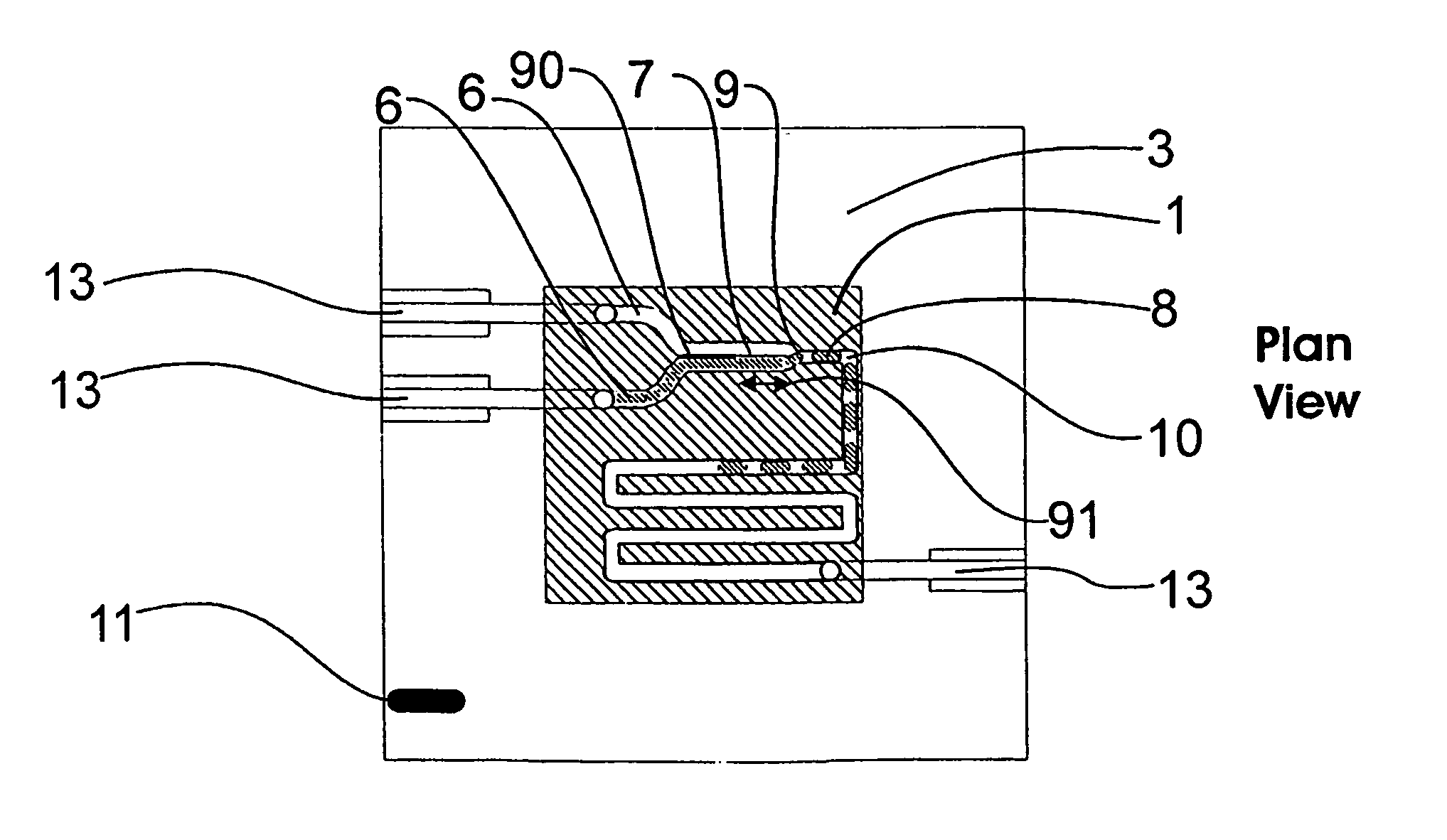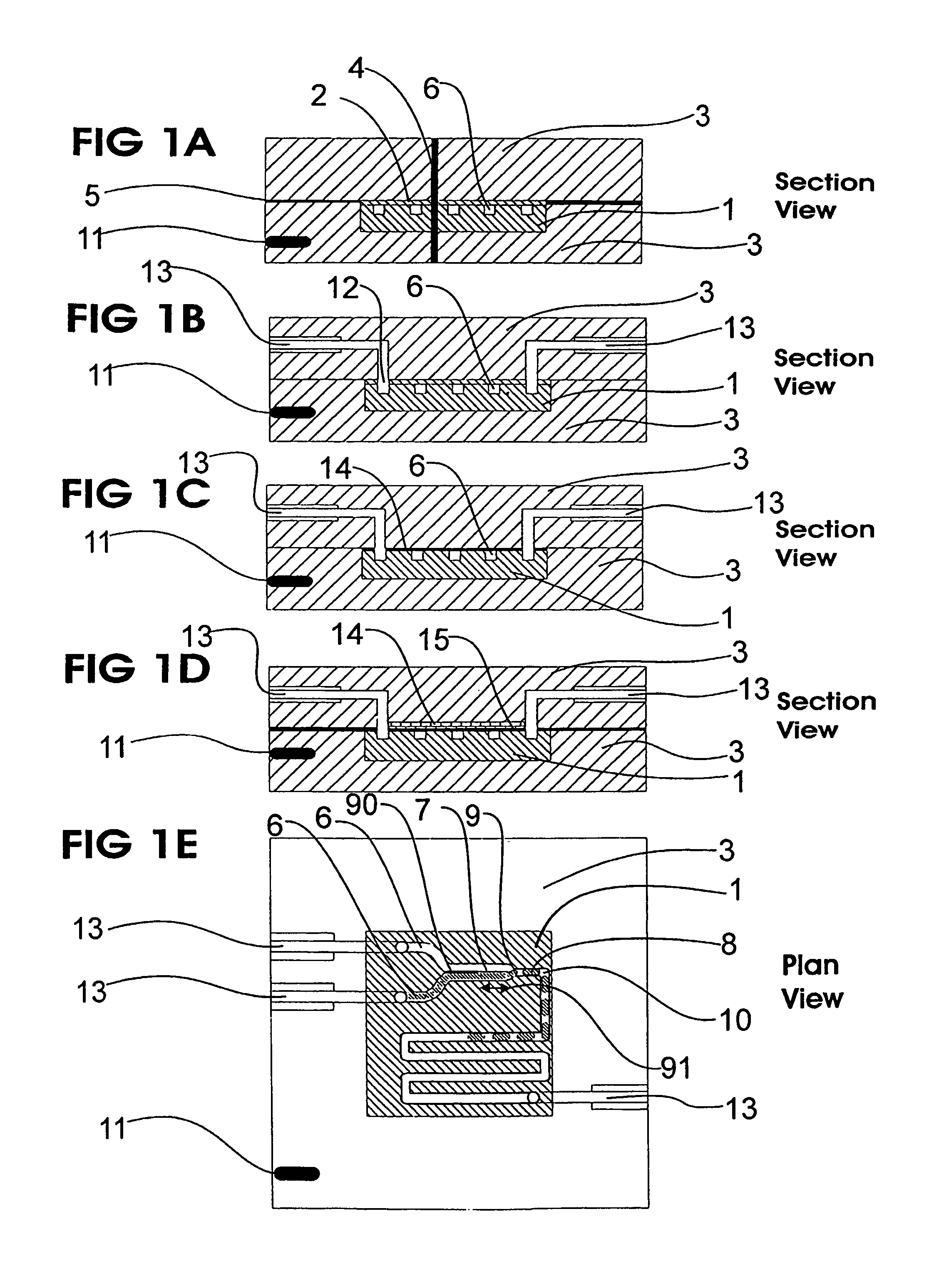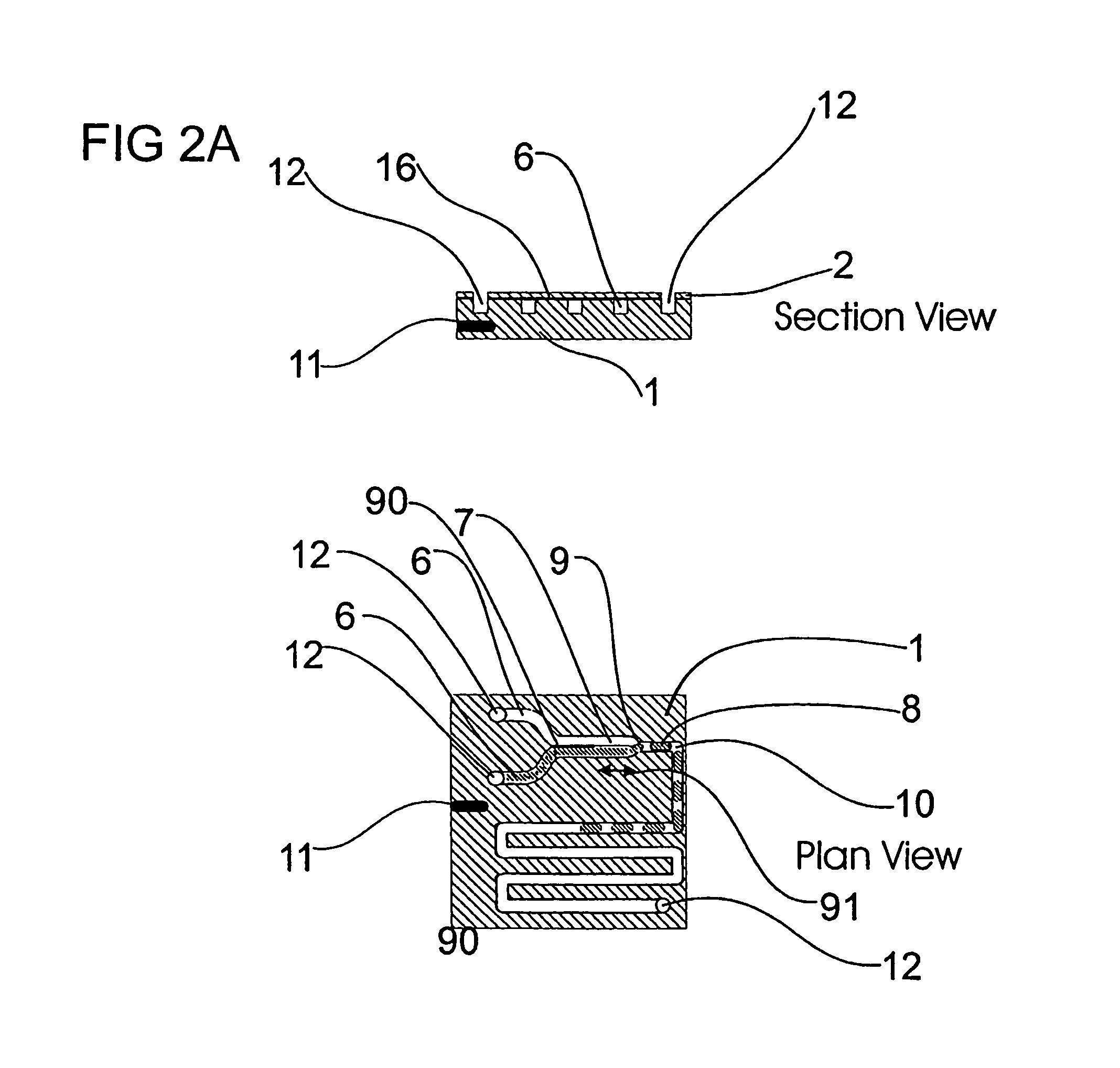Microfluidic device and methods for construction and application
a microfluidic device and microfluidic duct technology, applied in microstructural technology, microtechnology, nanotechnology, etc., can solve the problems of hampered sterilisation of microfluidic ducts, hampered maintenance of inert atmosphere in microfluidic ducts, and known devices and methods for fluid manipulation in miniaturised tubes, etc., and achieve the effect of considerable precision
- Summary
- Abstract
- Description
- Claims
- Application Information
AI Technical Summary
Benefits of technology
Problems solved by technology
Method used
Image
Examples
Embodiment Construction
[0073]FIGS. 1A-1E show various configurations for a fluid manipulation device. In FIGS. 1A-1B a first fluoropolymer-based or -coated substrate 1 and a second fluoropolymer-based or -coated substrate 2 are held in intimate juxtaposition by various means. In FIGS. 1A-1E the substrates are encased within two or more additional layers of casement material 3. The substrate layers sit within a cavity machined within the casement layers, the depth of which is slightly shorter than the combined thickness of the substrate layers. The casement material may extend, as projections 4, through vias in the substrate layers joining compatible protrusions on another corresponding casement layer. The casement material is a thermoplastic polymer welded together by thermocompression bonding or by inductive heating, of an optional thin metallic film 5 that may be applied to one of the two layers, to >Tg+5° C. of the thermoplastic polymer. At the points where the casement materials meet, the surface may ...
PUM
 Login to View More
Login to View More Abstract
Description
Claims
Application Information
 Login to View More
Login to View More - R&D
- Intellectual Property
- Life Sciences
- Materials
- Tech Scout
- Unparalleled Data Quality
- Higher Quality Content
- 60% Fewer Hallucinations
Browse by: Latest US Patents, China's latest patents, Technical Efficacy Thesaurus, Application Domain, Technology Topic, Popular Technical Reports.
© 2025 PatSnap. All rights reserved.Legal|Privacy policy|Modern Slavery Act Transparency Statement|Sitemap|About US| Contact US: help@patsnap.com



